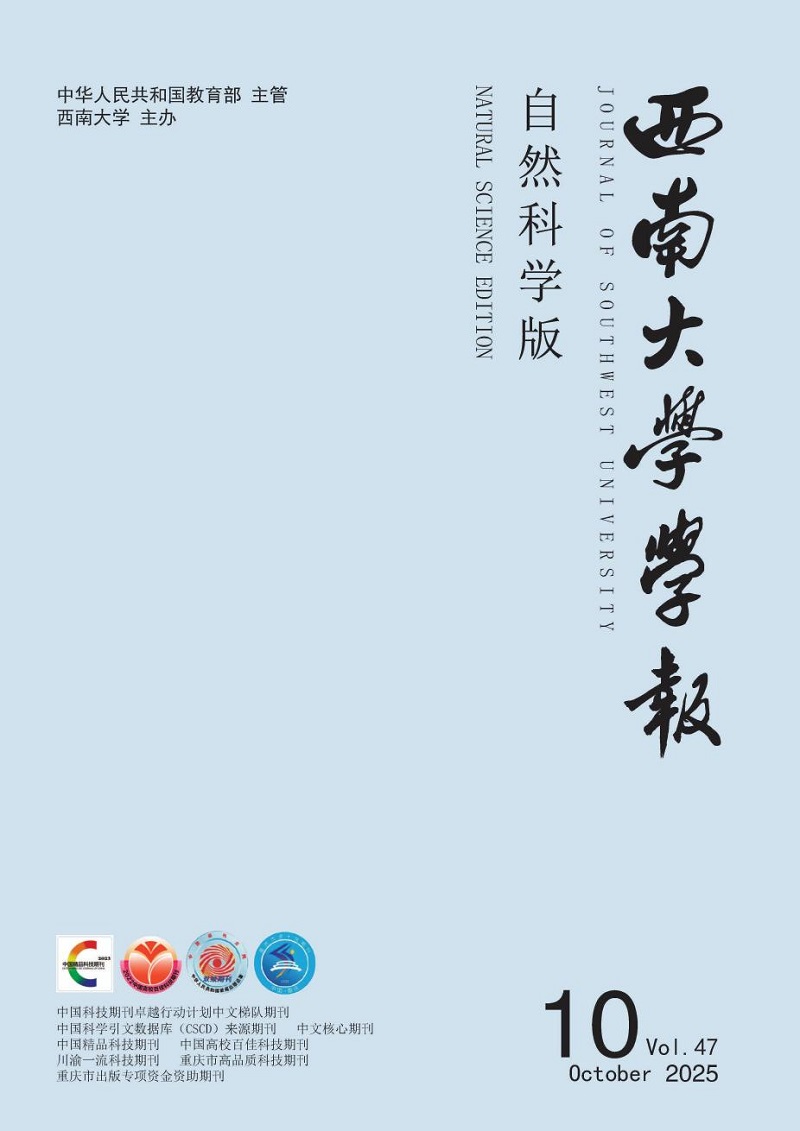-
开放科学(资源服务)标识码(OSID):

-
猪流行性腹泻(Porcine epidemic diahorrea,PED)是由猪流行性腹泻病毒(Porcine epidemic diarrhea virus,PEDV)引起猪的一种急性高度接触性肠道传染病[1-3]. 临床症状以呕吐、严重水样腹泻和脱水为主要特征[3-5]. 2010年底,我国大面积暴发PED疫情,导致猪群高发病率及高死亡率,感染仔猪的致死率高达100%,造成巨大的经济损失[6-7]. 在2013年,美国PED疫情不断出现和广泛流行,给美国养猪业造成沉痛打击[8-9]. 此外,国际贸易日益频繁加剧了PEDV的全球暴发,也给全球养猪业造成了威胁.
Na+/H+交换器3 (Na+/H+ exchanger 3,NHE3)属于SLC9A家族,存在于肠和肾上皮中,主要负责Na+的电中性吸收[10]. 在正常生理情况下,NHE3介导肠腔内Na+与肠上皮细胞内H+的交换,促进肠道对Na+的吸收,进而形成渗透梯度,增加肠道对水的被动吸收[11-13],并在盐与液体的吸收和pH稳态中起关键作用[14-15]. 研究表明,NHE3-/-小鼠的肠道和肾脏存在吸收缺陷,并出现酸碱失衡和Na+溶液量紊乱[15-17],当致泻物质如病毒、细菌和一些肠毒素作用于肠上皮细胞时,肠上皮细胞上相关离子通道及转运载体的表达和活性就会发生异常改变,导致水和电解质(Na+)的吸收和分泌受到干扰,从而引发腹泻[18].
在本研究中,我们利用PEDV感染IPEC-J2细胞后,检测NHE3的活性及其蛋白表达情况,探究NHE3与PEDV感染之间的联系,以期为PEDV感染诱发腹泻机制研究奠定基础.
HTML
-
非洲绿猴肾细胞(VERO),武汉大学中国典型培养物保藏中心;IPEC-J2细胞,上海素尔生物技术有限公司;PEDV CV777株由西南大学传染病实验室前期保存;DMEM培养基,青链霉素,Roswell Park Memorial Institute (RPMI)1640培养基,美国Gibco公司;澳洲胎牛血清,上海素尔科技有限公司;NHE3的siRNA干扰片段,广东瑞博生物科技有限公司;转染试剂,北京全式金生物技术有限公司;质粒提取试剂盒,上海赛默飞世尔科技有限公司;pEGFP-N3,pEGFP-N3-NHE3是由该实验室前期保存;RIPA细胞裂解液和BCA检测蛋白浓度,上海碧云天生物技术有限公司;蛋白酶抑制剂,Sulfo-NHS-SS-Biotin,APExBIO公司;鼠抗NHE3多克隆抗体,武汉金开瑞生物工程有限公司;兔抗β-tubulin多克隆抗体,羊抗鼠HRP偶联IgG,羊抗兔HRP偶联IgG,武汉三鹰生物技术有限公司.
-
将IPEC-J2细胞以每孔1×105细胞密度接种于12孔板中,直至细胞融合度达到约90%. 弃掉培养液,用PBS洗涤细胞2次,每孔加入PEDV病毒液(感染复数0.1) 300 μL. 每组设3个重复,培养2 h后弃去病毒液,然后每孔加入500 μL新鲜的完全培养液,分别培养2 h,10 h,22 h,显微镜下观察感染期间细胞的病理变化.
-
应用火焰原子吸收法测定IPEC-J2细胞中PEDV感染后细胞内外液中Na+质量浓度的变化情况[19]. 将IPEC-J2细胞以每孔2.5×105细胞密度接种于24孔板中,分别设立0 h,24 h,48 h和72 h过表达NHE3组、干扰NHE3组、PEDV感染组. 每组设置3个重复,同时设立3组平行时间对照组. 当细胞生长至融合度约90%时,接种PEDV病毒液(感染复数0.1),分别采集不同时间点的细胞内外液,于-20 ℃保存;按仪器和电脑软件的操作说明,依次打开乙炔气阀、仪器和电脑软件,选择Na元素灯,并在电脑软件上设置参数:测量Na的工作波长选择为589 nm,工作负压为297 V,2 mA灯电流和1 200 mL/min的燃气流量,然后寻峰;待选择峰值出现后,进行能量平衡;待能量值到达100%时,进行零校;然后点火成功后先用ddH2O清洗,再用5% KNO3介质溶液进行润洗;最后进行各个样品测量(包括质量浓度分别为0.05 μg/mL,0.10 μg/mL,0.20 μg/mL,0.30 μg/mL,0.40 μg/mL的标准Na溶液稀释液),待样品测量数值平稳后,记录该数值(该数值为仪器自动3次检测数值的平均值)并处理数据;用GraphPad Prism软件绘制标准曲线和PEDV感染各个时间点下细胞内外液中Na+的质量浓度变化.
-
利用生物素酰化法检测NHE3在IPEC-J2细胞膜上的表达量[20-21]. 细胞用预冷PBS(150 mmol/L NaCl和20 mmol/L Na2HPO4,pH值为7.4)洗涤后,用1 mg/mL Sulfo-NHS-SS-Biotin室温孵育30 min. 然后用含有15 mmol/L甘氨酸的淬灭缓冲液洗涤以清除游离生物素. 甘氨酸重悬后,2 184 r/min离心10 min,将细胞沉淀物在RIPA(含有100 mmol/L蛋白酶抑制剂)细胞裂解液中冰上裂解1 h,用Pierce BCA测定上清液中的蛋白质浓度,并用部分上清液分析总蛋白含量. 根据蛋白浓度(1mL链霉亲和素琼脂糖可与6 mg蛋白结合)计算链霉亲和素琼脂糖的量,在4 ℃反应90 min,然后用含100 mmol/L蛋白酶抑制剂的RIPA洗涤3次,2 991 r/min离心30 s,除去游离蛋白. 然后,加入6×protein loading buffer,在100 ℃变性10 min. Western blot分析IPEC-J2细胞膜上NHE3蛋白表达量的百分比. 利用维尔伯融合FX5成像系统(VILBER)获得印迹图像,并分析各波段的灰度值.
-
使用RIPA裂解缓冲液从细胞中提取总蛋白,并使用BCA蛋白试剂盒确定蛋白浓度. 蛋白通过10% SDS-PAGE电泳,并转移到聚偏氟乙烯(PVDF)膜上. 利用5%脱脂奶粉进行封闭,随后用鼠抗NHE3多克隆抗体和兔抗β-tubulin多克隆抗体进行孵育,最后用羊抗鼠HRP偶联IgG、羊抗兔HRP偶联IgG作为二级抗体的抗体. 利用维尔伯融合FX5成像系统(VILBER)获得印迹图像,并分析各波段的灰度值.
-
所有计算均使用GraphPad Prism 7.0进行. 所有数据均用x±s表示或带有来自3个独立实验的平均值的标准误差表示. 采用单因素方差分析(ANOVA)和t检验确定多组间的统计学差异. p<0.05,p<0.01均表示差异有统计学意义.
1.1. 实验材料
1.2. 实验方法
1.2.1. PEDV感染IPEC-J2细胞
1.2.2. 细胞内外Na+测定
1.2.3. 生物酰化标记测定膜蛋白
1.2.4. Western blot检测NHE3总蛋白的表达
1.3. 统计分析
-
在显微镜下观察PEDV感染细胞的病理变化(图 1). 正常的IPEC-J2细胞呈完整的梭形,边界清晰,无重叠;PEDV感染4 h后无明显变化;12 h后细胞出现皱缩、伸长、融合,表现为典型的细胞病变;24 h后,细胞形态严重受损,细胞皱缩成颗粒状,部分细胞坏死.
-
在IPEC-J2细胞中转染3个针对NHE3的特异性siRNAs干扰片段,以筛选高效siRNA质粒干扰片段,结果如图 2. 在IPEC-J2细胞中,用微管蛋白(β-Tubulin)为内参,NHE3的最佳干扰片段是siRNA-1,筛选出来的最佳干扰片段用于后续实验.
-
火焰原子吸收法结果显示,过表达NHE3组(pEGFP-NHE3+PEDV)、干扰NHE3组(siRNA1+PEDV)、PEDV感染组细胞内Na+质量浓度随着感染时间的延长逐渐减低(图 3a). 在感染后的0 h和24 h时过表达NHE3组和干扰NHE3组相比,干扰NHE3组细胞内Na+质量浓度下降比较显著(p<0.01,p<0.05);在0 h时干扰NHE3组和PEDV感染组相比,干扰NHE3组细胞内Na+质量浓度下降比较显著(p<0.01). 细胞外Na+质量浓度的变化随着时间延长逐渐升高(图 3b). 在感染后0 h时过表达NHE3组和干扰NHE3组相比,干扰NHE3组细胞外的Na+显著低于过表达NHE3组(p<0.05).
-
Western blot检测结果显示,与对照组相比,过表达NHE3组、干扰NHE3组和PEDV感染组细胞总NHE3蛋白表达量差异无统计学意义;过表达NHE3组与干扰NHE3组、PEDV感染组以及干扰NHE3组和PEDV感染组相比,随着感染时间的延长细胞总NHE3的蛋白表达变化无统计学意义(图 4),说明总蛋白NHE3的表达量可能不受PEDV感染的影响.
-
Western blot检测结果显示(图 5),过表达NHE3组和干扰NHE3组相比,干扰NHE3组的膜蛋白NHE3的表达水平显著低于过表达NHE3组(p<0.01);过表达NHE3组和PEDV感染组相比,PEDV感染组的膜蛋白NHE3的表达水平显著低于过表达NHE3组(p<0.05);干扰NHE3组与PEDV感染组相比,干扰NHE3组的膜蛋白NHE3的表达水平显著低于PEDV感染组(p<0.05);干扰NHE3组和对照组相比,对照组的膜蛋白NHE3的表达水平高于干扰NHE3组.
2.1. PEDV感染模型的建立
2.2. NHE3目标蛋白的最佳siRNA干扰片段的筛选
2.3. PEDV感染细胞后对Na+交换活性的影响
2.4. PEDV感染细胞后对NHE3总蛋白表达的影响
2.5. PEDV感染降低细胞膜上NHE3蛋白的表达
-
目前对PEDV的感染途径、病理生理学等进行了广泛的研究[3, 22],但PEDV诱导仔猪腹泻的分子机制尚未明确. 本研究在细胞水平上发现了PEDV感染IPEC-J2细胞后引起NHE3活性降低和蛋白表达量下降,为进一步探究PEDV感染后引发腹泻奠定了基础.
PEDV主要通过消化道和鼻腔感染,侵袭小肠并在小肠内进行大量复制[3],破坏小肠绒毛(空肠和回肠为主要感染部位)和大肠的绒毛上皮细胞[1, 23-24],扰乱了肠腔内营养物质吸收电解质的正常转运(尤其是Na+),从而使肠腔内渗透压升高,导致腹泻. 研究表明,NHE3蛋白的活性状态及表达水平与腹泻的发生发展密切相关. 比如,NHE3引起了小鼠肠道对Na+和水的吸收急剧下降,导致严重腹泻[15]. 编码NHE3的SCL9A3基因的错义突变与先天性钠腹泻(CSD)有关[11]. 肠细胞中NHE3蛋白的表达减少和定位错误也被认为是微绒毛包涵体病患者腹泻的部分原因[25]. 小鼠中NHE3基因的表达受到干扰时,会导致轻度腹泻、血压较低、代谢性酸中毒[16]. 在霍乱毒素引起的腹泻和严重肠炎条件下,NHE3的蛋白表达和活性受到明显抑制[26-27]. 以上研究均表明NHE3的活性变化与腹泻的发生密切相关[12, 28].
本课题组前期已经证明轮状病毒(TGEV)感染小肠上皮细胞后,引起小肠细胞对胞外的Na+吸收水平降低,NHE3膜蛋白表达量下降. 据此推测TGEV感染猪小肠上皮细胞后,可能通过改变NHE3膜蛋白的表达和活性,减少小肠上皮细胞对Na+的吸收[21]. TGEV和PEDV的临床症状极其相似[29],又同属α冠状病毒,结合本实验室前期研究以及相关文献报道,发现轮状病毒对NHE3蛋白水平及其生物活性有影响[30],而PEDV感染条件下对NHE3影响的研究还鲜有报道.
为进一步确定PEDV感染IPEC-J2细胞后对NHE3活性和表达量的影响,本研究利用火焰原子吸收法检测过表达NHE3,干扰NHE3以及PEDV感染时细胞内外Na+的流动速率. 结果显示,过表达NHE3组、干扰NHE3组、PEDV感染组细胞内Na+质量浓度随着感染时间的延长逐渐降低. 0 h和24 h时,过表达NHE3组和干扰NHE3组相比,干扰NHE3组细胞内Na+质量浓度下降比较显著;0 h时,干扰NHE3组和PEDV感染组相比,干扰NHE3组细胞内Na+质量浓度下降比较显著;细胞外Na+质量浓度的变化随着时间延长逐渐升高. 利用生物素酰化实验进一步验证PEDV感染对NHE3的影响,Western blot结果显示,过表达NHE3组和干扰NHE3组相比,干扰NHE3组的膜蛋白NHE3的表达水平显著低于过表达NHE3组;过表达NHE3组和PEDV感染组相比,PEDV感染组的膜蛋白NHE3的表达水平显著低于过表达NHE3组;干扰NHE3组与PEDV感染组相比,干扰NHE3组的膜蛋白NHE3的表达水平显著低于PEDV感染组. 过表达NHE3组、干扰NHE3组和PEDV感染组总NHE3蛋白量感染前后无明显变化,但质膜上NHE3量却随感染时间显著性下降,因此推测可能是PEDV感染后期能抑制NHE3向质膜的易位,并刺激NHE3的直接降解,降低NHE3活性,从而影响肠上皮细胞正常的Na+/H+交换,成为肠道电解质紊乱的重要因素之一.
本研究证明了PEDV感染IPEC-J2细胞后细胞膜上NHE3活性降低,阻碍了Na+转运,导致肠道内电解质紊乱,进而引发腹泻. 研究NHE3在PEDV感染中的作用,为揭示PEDV感染引发仔猪腹泻机理提供参考,也为抗病毒性腹泻治疗提供了新靶点.











 DownLoad:
DownLoad: